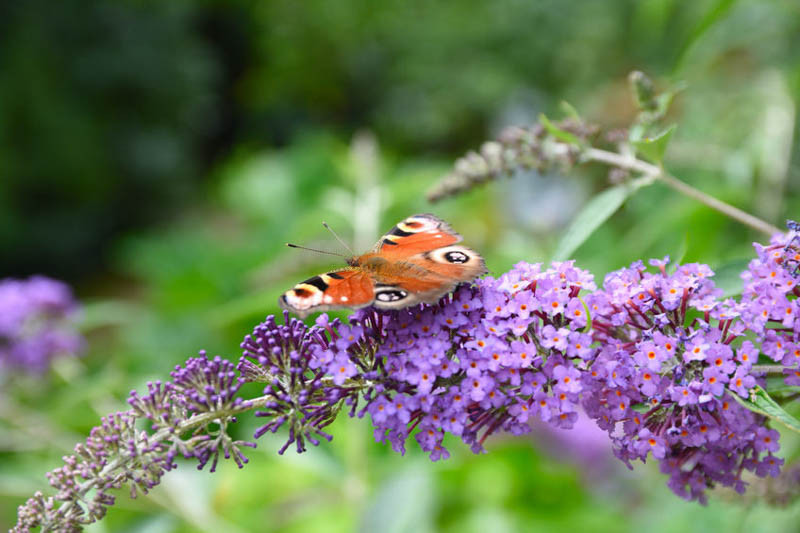Butterfly Bush
The Butterfly Bush, or Buddleja, is a fast-growing, deciduous shrub prized for its fountain-like habit with arching branches that bear lance-shaped leaves. Its vigorous nature allows it to quickly establish itself in a landscape, creating a dense, bushy appearance that can reach heights and spreads of 6 to 12 feet (180-360 cm), depending on the variety.
Hardiness: Hardiness is a strong suit for most Buddleja species, which thrive in USDA zones 5 through 9. They are robust and resilient, able to withstand winter cold in these zones, though they may die back to the ground in colder parts of their range and re-emerge in spring.
Flowers: The true allure of the Butterfly Bush lies in its conical clusters of flowers that bloom profusely from summer to fall. These fragrant blooms can be shades of purple, blue, pink, white, or red and are magnets for bees, butterflies, and hummingbirds. The long bloom time ensures continuous interest and ecological benefits throughout the warmer months.
Uses: Buddleja is commonly used as a focal point in garden beds and borders due to its size and attractive flowers. It’s also effective when planted en masse for a dramatic effect in large landscapes or as an informal flowering hedge. The cut flowers can be used in bouquets, adding a lovely scent and a touch of the wild to arrangements.
Invasiveness: The plant’s vigor can be a double-edged sword. Buddleja is known for its invasiveness in certain regions, as it can self-seed prolifically and establish itself in areas beyond the garden, outcompeting native vegetation. To mitigate this, choose sterile cultivars that do not produce viable seed and always remove spent flowers to prevent seeding.

